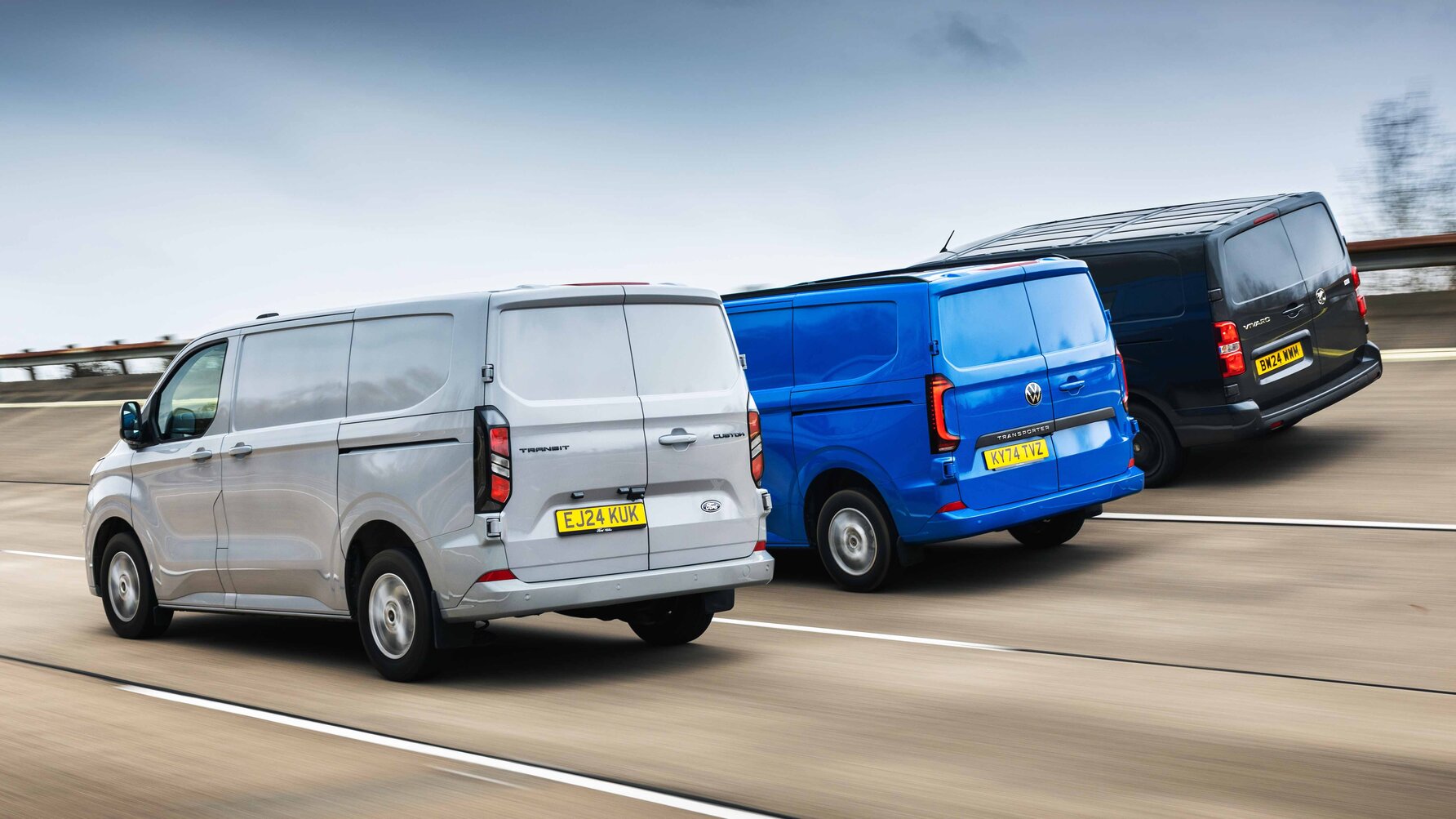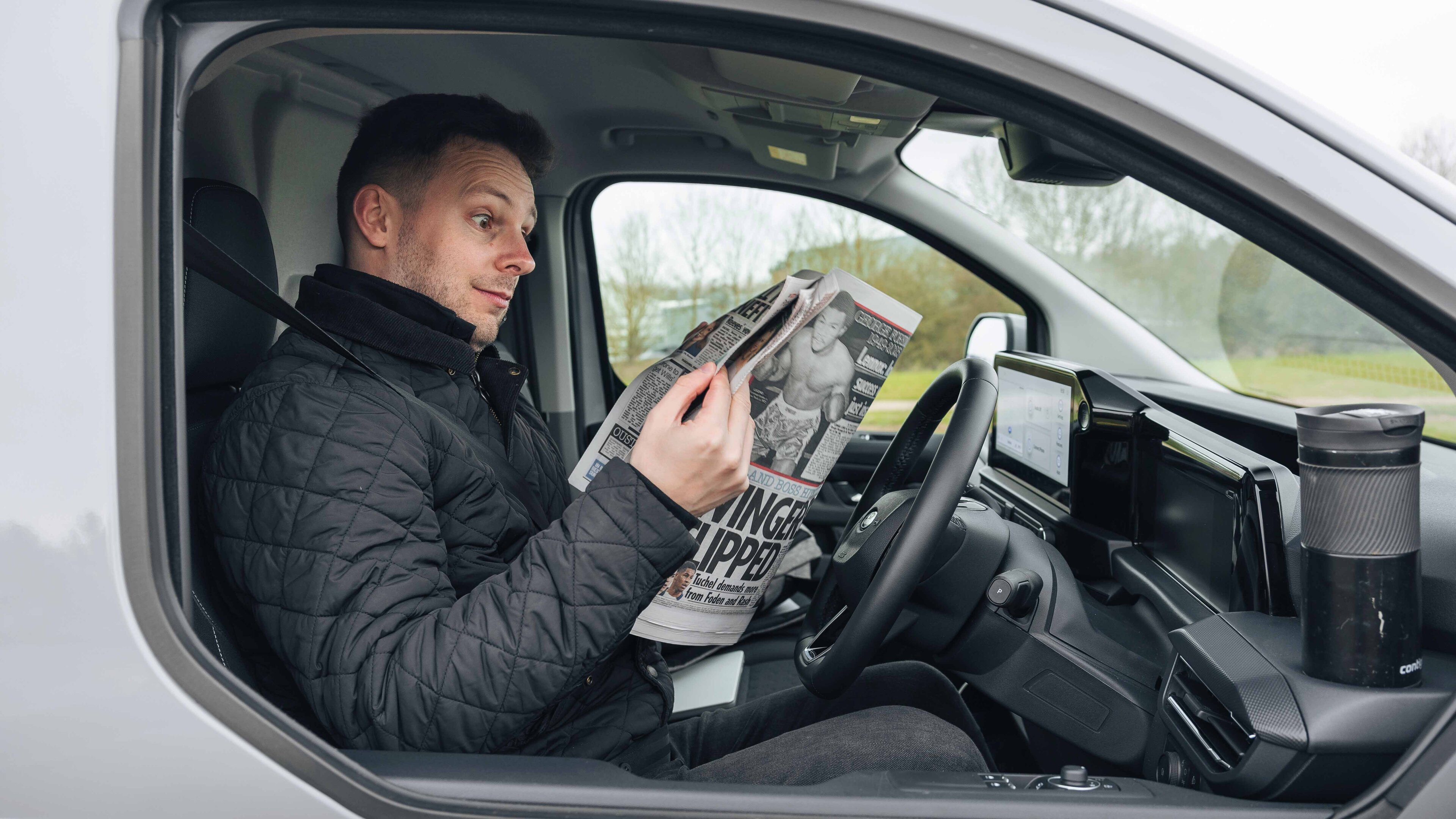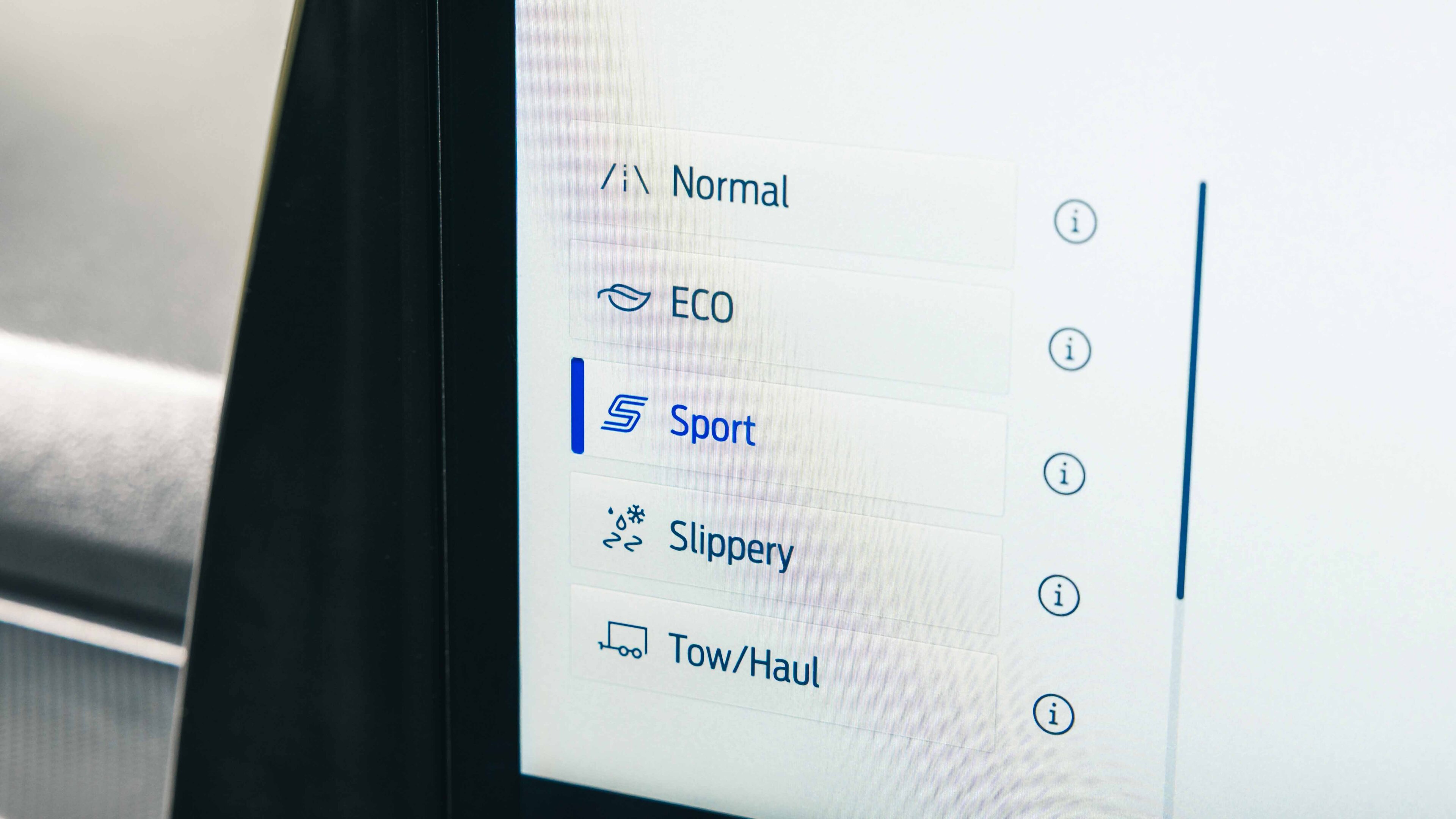
The most important review you'll read: Top Gear's Medium-Sized Diesel Vans MegaTest!
Time to delve into the undercover heroes of the UK's road network: medium-sized vans
This is the most important test you’ll read right now. Why? Because it’s about vans. The workhorses of the UK stable, the nervous system of order fulfilment, the dieselly enabler of your online shopping habit. You, or someone you know, owns a van. In urban areas they’re like rats – you’re never more than 49 metres from one. And the numbers are growing. As of 2024, there were approximately 4.6 million licensed vans in Great Britain, one for every 15 people in the country, and the Ford Transit alone has over 960,000 vehicles licensed and gambolling about our road network. So yes, vans. The most important vehicles you never notice...
The truth is that vans support everything. From small businesses to construction to retail, to propping up the near instantaneous delivery of your sweatshop specials, vans are the key to that ‘last mile’ delivery puzzle. And while you might think that vans haven’t changed much over the years, you’d be wrong. They’re cleaner, more equipped, handle better and last longer (in some cases) than they ever did.
Interestingly though, the stats show that 96 per cent of vans are still vehemently diesel powered (electric vans only account for a single per cent of the current van ecosystem), so we thought we’d take a look at three of the most popular medium sized diesel vans currently on the market to see which is the best. Now, obviously we could have used spreadsheets and science, instead preferring tactical stupidity and inaccurately applied smartphone stopwatches to determine the winner, in the grand tradition of Top Gear professional chaos. Don’t say we didn’t warn you.
Photography: Jonny Fleetwood
First we need to meet our contenders. The Transit needs little introduction, it being the most popular van – in its various forms – in the UK. The basic Transit Custom we have here is the most popular bodystyle, combining generous payload with a road footprint that stills fits in car parks and through urban width restrictors, but still with enough space to fit three people in bright orange safety wear.
Which means the VW Transporter we have here isn’t much of a surprise, given that it sits pretty closely to the Transit ideal. More than closely, seeing as it’s the same van with a bit of badge engineering and different trim. Yep, the T7 VW Transporter is a Transit Custom. Or possibly the other way around, but they’re both built at Ford’s plant in Turkey on a slightly out of register photocopier. So they get the same engines, the same transmissions, the same bodies – with a bit of Vee-dub or Ford veneer thrown over the top. So they should be pretty much identical.
In the same vein, our third contender is our control subject and actually also our fourth, fifth, sixth and seventh, seeing as the Vauxhall Vivaro is Stellantis’ shared platform panel van with manufacturer specific tinsel. So the Vivaro is also the Citroen Dispatch, Peugeot Expert, Fiat Scudo and Toyota Proace with different faces. And it’s a solid van. Much cheaper than the other two, with slightly less power and a manual box where the other two are eight speed autos, but it’s got all the right ingredients.
So. Unsurprisingly, there are challenges. A multidrop delivery section with bonus slippery surface skidpan, timed laps on a dedicated handling circuit (both loaded and unloaded) and a comfort and usability gymkhana. None of which our two testers were briefed about, prepared for, or indeed capable of. Still, you work with what you have, and the multidrop delivery sounded pretty easy: stop on the skiddy bit, find and deliver a package, reverse around a corner, repeat.
Top Gear
Newsletter
Thank you for subscribing to our newsletter. Look out for your regular round-up of news, reviews and offers in your inbox.
Get all the latest news, reviews and exclusives, direct to your inbox.
The Transit was unsurprisingly quickest off the line in Sport mode (yes, it has carlike modes) with a grumbly flare of wheelspin, excess speed into the braking zone punished by several yards of ABS chittering overshoot. Slightly gung ho from the other Ford in the test, there. But once in position, packages can be accessed well enough from the single nearside sliding door or 90° rear doors, ‘delivery’ devolving into a handy lob at the nearest house. Might as well make it realistic. Standard keyless entry and push button start helps here, and there’s a delivery mode that puts on the hazard lights automatically and locks the van when you step away. Handy. Still, the reversing was swift and easy thanks to rear and bird’s eye cameras, the auto useful and well geared for the stop/start nightmare. A solid performance all round from the Ford with a 3:02 time.
The VW should have been very similar. But it wasn’t. Noticeably more relaxed off the line – still in Sport – the VW went all McRae on the low-mu stopping section and arrived in a much more spectacular opposite lock stance than the Transit. Which looked cool, but would likely evoke stern stares if you did it on the high street. But the packages found their berths in the same way (violently), and the reversing was exactly the same as the Ford – easy and precise thanks to the camera systems. Slower overall at 3:10, but easy enough.
Which brings us to the Vivaro, which was... much better than expected. It’s got an actual key and ignition barrel, but that didn’t seem to slow it down much. And a well weighted clutch and box make it very easy to drive, with straight braking and easy reversing. Plus, the Vivaro comes with sliding doors both sides, making it much more practical when it comes to loading and access. It was slower than the other two at 3:20, but not by much – with most of that deficit attributed to Ollie Kew throwing himself inelegantly to the floor on dismount and negotiating the friction challenged delivery arena like he’d had some sort of embarrassing accident. Which just goes to show that you should always wear boots when driving a van, and not Temu Pumas.
Which brings us on to test two: handling. Conducted on a specific handling circuit, we timed and assessed all three vans both unloaded and stuffed full of wheels and tyres, with some 350kg of squeaky rubber balance of power and full send. The Transit was the fastest and most carlike with a combined time of 1:59, lifting an inside wheel unloaded like some tremendously blobby Fiesta ST, nicely reliable with a load on. The VW was calmer and more composed, but slower with a totted up time of 2:06.4, the van that changed the least with/without load.
And the Vauxhall was the slowest at 2:06.3, but the one that felt much more planted with the back full of important delivery items, the origins of which no one could properly explain. It’s wise to mention here that both the Transit and the VW were actually faster with added weight. Which we could put down to familiarity with the track, a more settled back axle or general incompetence.
And so to the final test: the comfort and usability melee. Which involved driving down a two mile section of cobbled road and across large speedbumps while desperately trying to use the various touchscreens and cubbies and complete various tasks like juggling, transporting a tray of drinks in glasses made of the thinnest plastic known to science, the delicate fabrication of a ham sandwich, assembling a cup of hot tea and singing the greatest hits of Whitney Houston. Unfortunately, one of the limiting factors here was the driving of the other tester, which proved to be somewhat biased. No times for this one, as it was all about the ‘feel’ and subjective points scoring.
Again, the Transit was solid, with reasonable damping and an interior with plenty of pockets and cubbies for packets of cheap ham. Always an important metric. The lack of physical buttons is a major bugbear when you’re on the move though – everything goes through the central touchscreen and the screen logic is more complex than HMRC’s phone system – and it’s a little noisy, but it remained reliable in its reactions over even the biggest bumps. You can see why people like these things.
If you want a van in which to transport 36 paper thin glasses of drink over speed bumps at 45mph, the VW is the one
The Vivaro was noticeably harsher over the hump section (airborne, in some cases), noisier again on the cobbles, and suffered massively from having front seats that have all the relaxing qualities of the average wooden church pew. Which is an absolute killer if you spend all day in one. But it’s got some nice touches, like a lift up cinema style passenger seat and underseat storage in the middle for entire loaves of bread and several oranges. And actual, real time buttons and rotary dials for some functions, which make it much safer to operate on the move.
It was the Transporter that impressed the most here though. Again, it was calmer, more supple and felt weirdly more expensive than the Transit, especially on the mobile tea making front. A feeling reinforced by little things like rear wheelarch liners where the Transit has none, and extra bits of trim over the rear numberplate lights. It might not have been as fast as the Ford, but something about the VW made it feel more upmarket and more relaxing – especially on a long drive and over Belgian pavé, although again, the multimedia is perilously annoying.
Which brings us to the conclusion. The Vivaro really can’t be beaten for value. It’s solid, practical and remarkably easy to drive, and when it’s your money on the line, it competes with much more expensive vans. But we can’t forgive the driving position – if you’re in this thing 12 hours a day, you’ll be slumped over the wheel like a melting candle. It’s also just less plush than the other two for daily duties, plus you can barely hear yourself sing ‘I Will Always Love You’ even at full gospel volume.
Which leaves the non-identical twins, and the Transit Custom and T7 Transporter are harder to pick apart. The Transit is a superbly rounded van that handles more like a car than a carryall, but do you really need that in a van? It might be handy on a track, but if you can’t juggle three oranges while setting the satnav to the local Jewson, is it really that good? Which means, that if you want a van in which to transport 36 paper thin glasses of drink over speed bumps at 45mph, the VW is the one. The Transporter felt more relaxed and relaxing, and comes in a bit cheaper. So from the two, the winner would seem to be the Transit van. Except the one wearing a VW badge. But we all know the real winner here is science itself.

Trending this week
- Car Review
Bentley Brooklands











